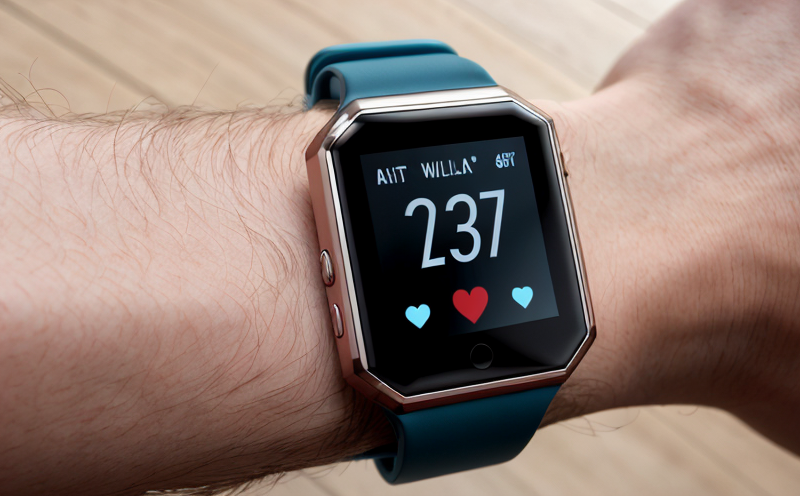IEC 60068-2-30 Damp Heat Cyclic Testing for Wearables
The IEC 60068-2-30 standard is a critical protocol used to evaluate the durability and reliability of electronic devices, especially those that come into contact with moisture or are subject to fluctuating environmental conditions. In the context of wearables, this testing ensures that devices can withstand cyclic exposure to damp heat environments without compromising performance or integrity.
The standard is particularly relevant for wearable technology like smartwatches, fitness trackers, and other health-monitoring devices. These products often operate in diverse climates where they may be exposed to varying levels of humidity and temperature fluctuations. Ensuring these devices meet IEC 60068-2-30 compliance helps manufacturers guarantee the longevity and reliability of their products.
The cyclic damp heat testing procedure involves exposing specimens to a series of temperature and humidity cycles designed to simulate real-world conditions that can affect device performance. This process is essential for identifying any potential weaknesses or areas where moisture intrusion could cause malfunctioning, corrosion, or other failures.
During the test, samples are exposed to alternating humid and dry environments at specified temperatures within a controlled chamber. The duration of each cycle varies depending on the specific requirements outlined by the standard, but it typically involves periods of high humidity followed by drying out phases. This cyclic exposure simulates conditions that devices might encounter in various climates or operational environments.
Testing to this international standard is especially important for wearables due to their direct contact with skin and frequent interaction with bodily fluids such as sweat. Compliance ensures the safety and effectiveness of these products, thereby enhancing consumer trust and satisfaction.
Applied Standards
| Standard Name | Description |
|---|---|
| IEC 60068-2-30 | Cyclic thermal shock and temperature cycling for electronic equipment, Part 2: Environmental testing handbook. Section 30: Damp heat cyclic. |
Benefits
- Ensures compliance with international standards, enhancing product reliability and market acceptance.
- Promotes safer use of wearable devices by preventing moisture-related failures.
- Reduces the risk of product recall due to quality issues or non-compliance.
Industry Applications
The IEC 60068-2-30 damp heat cyclic testing is particularly beneficial for several sectors including healthcare, fitness, and consumer electronics. In the medical industry, wearables are used to monitor vital signs and provide real-time health data, making it crucial that these devices remain functional in various climates.
In sports and fitness, wearable technology can track heart rate, steps taken, and calories burned. Ensuring these devices perform consistently under cyclic damp heat conditions is essential for maintaining accurate measurements and user experience.
For consumer electronics, the durability of wearables against environmental stresses is key to their longevity. This testing helps manufacturers ensure that their products can withstand the rigors of daily use in diverse environments.





